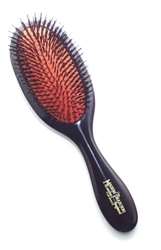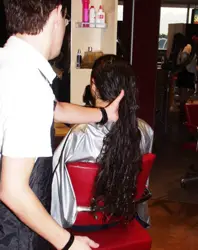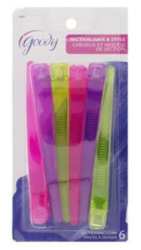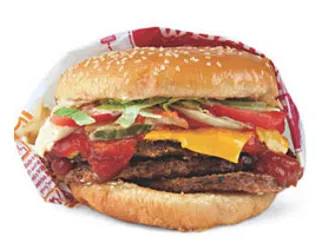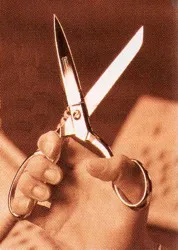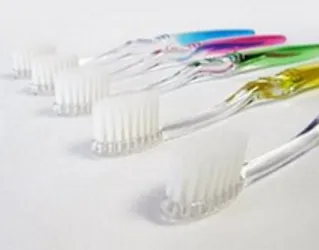
How To Air Dry Fast
How To Air Dry FastBack in 1988 when I made the commitment to grow my hair to it's optimal terminal length, my long hair specialist in New York City taught me how to air dry fast.
The technique I was taught was referred to as Fanning The Strands.
It's also referred to as Air Fanning. The essence of how to air dry fast is a specific fanning movement which safely, but very quickly, air dries tresses.
Air Fanning will even work quickly on hair like mine which is medium thick with natural waves and a sprinkling of curls. My hair extends to my hips. Obviously I have a lot of hair I need to air dry quickly.
Since I learned how to Fan my hair dry, I don't even own a blow dryer or any other hot styling tools. After years of wrapping my soaking wet into a towel and air drying it the old fashioned way, this method works quickly.
Danger - Lots Of Misinformation On Air Drying Hair
There's lots of misinformation on the Internet about how to air dry hair quickly. Some of the information which advocates using a {{asin=B001N444IG,text=brush}} in a rapid movement on tresses can actually damage hair, which is in it's most fragile state when damp or wet.
Other damaging air drying methods include constantly whipping hair around, which can result in split ends or rips. Standing in front of a heater, air conditioner or hand dryer can result in dehydrated hair which is more prone to damage. Ruffling hair with a towel or fingers may also cause hair to break or tangle.
Fanning The Strands - How To Air Dry Fast
This air drying technique works best for hair which is thin/fine, medium, thick or very thick.
It's ideal for hair which is naturally straight to slightly textured. It may or may not work for hair with is tightly textured or hair which tends to frizz when dried with fingers or hands. Hair which is chemically treated, damaged, super dry or overly porous, may also not dry as quickly as hair which is healthy.
Note: When in doubt, try the technique on a small section of your hair to determine the results and whether or not it's viable for your hair type, textures, style and length.
How To Steps for Fast Air Drying
1. Cleanse hair with normal washing routine in lukewarm water.This technique works with Water Only (WO), Conditioner Only Wash (CoWash), Diluted Shampoo (DS) or any combination of techniques including full strength shampoo.
2. Rinse hair well, apply desired rinse out conditioner. Separate hair into 2-4" sections and detangle while in the shower from the ends up to the roots using a hair-friendly detangling tool or fingers.3. After hair is completely detangled, rinse well and finish with a cool or cold water rinse to close the cuticle and make air drying easier to achieve.
4. While still in the shower, use the accordion finger method of gently squeezing excess water from all of the strands. Work in small sections from one side of the head to the other to gently extract all moisture from tresses.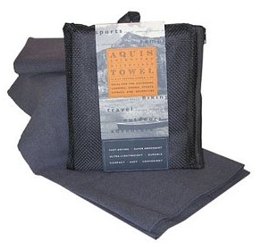 5. Using a microfiber or very thick towel, blot, do not rub or squeeze, sections with the thick towel to remove even more moisture. Do NOT wrap hair in a turban.
5. Using a microfiber or very thick towel, blot, do not rub or squeeze, sections with the thick towel to remove even more moisture. Do NOT wrap hair in a turban.
7. Do one more gently according squeeze on the ends of the hair only. Keep in mind the more water you can gently wick from your hair, the faster it will air dry.
8. On slightly damp, completely detangled hair, create a center part down the middle of your head from the nape of the neck to the center of forehead.Fan The Strands
1. Your hair should be equally separated into two sections. Separate one section from the other with a soft scrunchie or {{asin=B007N9Y5TS,text=clip}} which won't create a crease to hold 1/2 of the hair out of the way.
2. Take a very thin strand of hair the size of a lead pencil in your hand or between your thumb and index finger. If you like, your hand can be very lightly coated with a leave-in conditioner or similar.
3. Bring your hand and/or fingers up to your ear. Lift the strand extending it all the way out to the side of your head as far as it will extend.
4. Slowly release the hair so the strands drop towards the floor. You will be fanning the strands which help to remove all remaining water and airing out the hair at the same time.
5. Lift an adjacent pencil sized section and repeat the fanning process in Steps 3-4.
6. Keep Fanning until all hair is dry.
Note: As the hair dries, you can start to work with larger sections of hair. You can also experiment with a wide tooth hair-friendly comb with smooth teeth. Do NOT use any type of brush. Go slowly and very gently when using the comb. Work from the ends up to the roots.
7. When all of the hair has been fanned until dry on one side, separate the section with a crease-free sectioning clip or a soft scrunchie.
8. Repeat the air fanning procedure with the other section of hair until completely dry.
Finish Fanning With A Little Bit Of Oil
Optionally you can experiment with not separating hair into two separate sections and fanning all the strands in sequence.
When finished fanning the hair, if hair feels dry, you can add a light application of hair oils such as jojoba to the palms of your hands.
Massage hands together.
Lightly pick the oiled fingers through the driest sections of hair. Remember, a little bit of oil goes a very long way.
Summary - How To Air Dry Fast
Using this fanning technique, my medium thick, hip length long hair dries in approximately 20 minutes in 65-70 degrees.
Indoors, standing about 3-4 feet from a blow dryer, it used to take approximately 40-45 minutes to completely dry.
The key things to remember as you learn how to air dry fast?
Finish with a cool water final rinse, gently remove as much water as possible, detangle hair completely before fanning and keep air constantly circulating through tresses while fanning.Social Media Network Information
Please follow us on Twitter at: https://Twitter.com/HairBoutique. I look forward to meeting new people from all walks of Twitter and learning from their Tweets.



